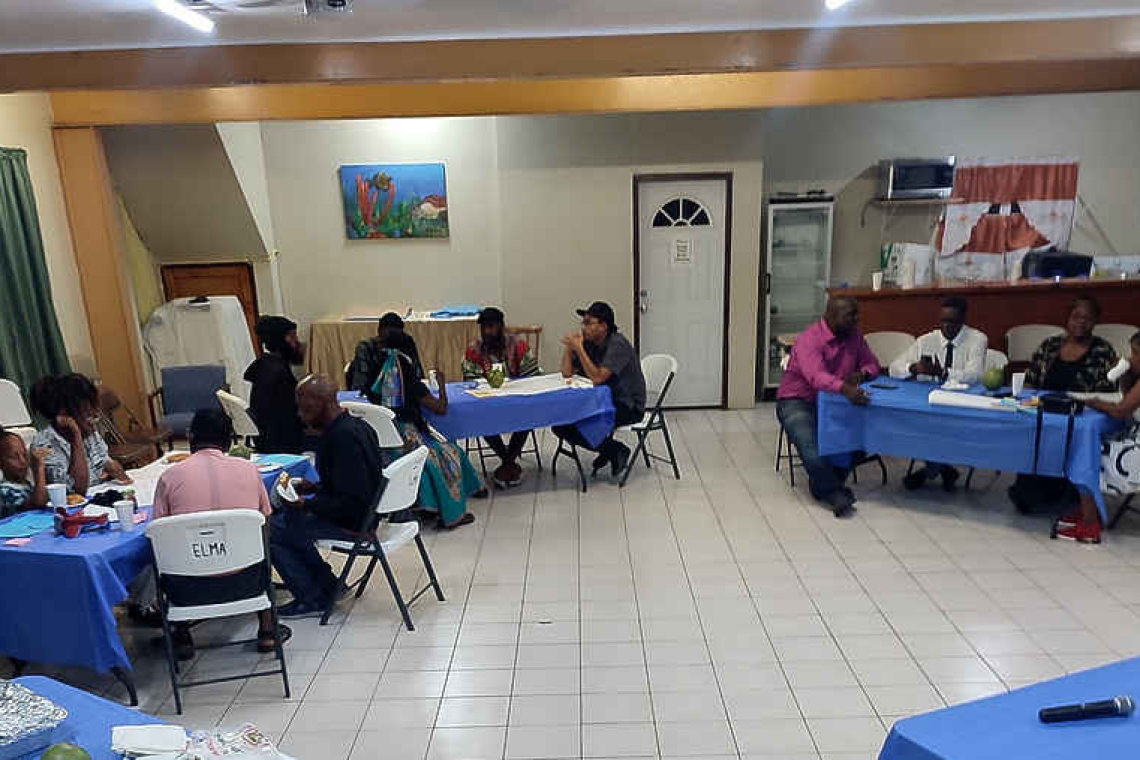Some of the participants during the event.
ST. EUSTATIUS--A cross-section of the St. Eustatius community recently met at Elrine Leslie Methodist Auditorium (ELMA) to discuss the reburial of 69 enslaved persons whose remains were excavated from the 18th-century site of Golden Rock Plantation.
Statia Cultural Heritage Implementation Committee (SCHIC), St. Eustatius Historical Foundation and other stakeholders organised the community event.
“Participants envisioned the reburial ceremony as an event where attendees wear traditional African attire, paying homage to the ancestors’ cultural heritage. The importance of conducting the ceremony based on traditional practices of the enslaved, such as libations, was underscored,” the organisers said.
The discussion also encompassed isotopic and artefact analysis, and the use of historical records to gather more information about the enslaved. This followed an informational video by Assistant Professor at the Department of Anthropology at John Hopkins University Dr. Aja Lans, who explained the purpose, methodology and alternatives to isotopic analysis.
“Opinions varied. Some participants were open to conducting isotopic analysis on a select few remains, while others questioned the necessity of this destructive form of analysis,” the organisers said. “Moreover, participants explored various elements of Statian cultural heritage worth protecting in a local ordinance. The protection of historical buildings was a frequent topic, despite debates on the relevance of structures owned by the Dutch Government and the European architectural styles.
“Additionally, community members highlighted the need to safeguard local fruit trees, herbs, spices, oral traditions, string band music, wells, shorelines and beaches.”
Some participants reportedly also wanted future reburials to happen at the site where the Golden Rock remains will rest.







